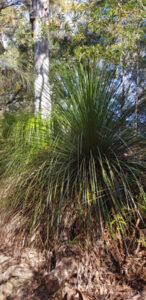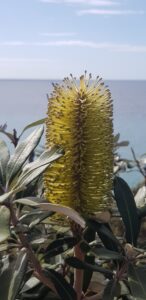Re-vegetation or ecological restoration
By Patrick Regnault
As we become more environmentally conscious, individuals or communities in rural or regional areas may wish to re-vegetate part of their land to improve the local biodiversity. To be of full benefit the planting has to serve the local fauna, be a future seed bank for the local flora, and increase soil health.
Consider sourcing plant materials from different origin sites to increase the genetic potential of plant reproduction. Increasing genetic diversity has potential impacts beyond the original planting site. Dispersion by wind or animals has the potential to improve the genetic diversity in the general area.
The planting density has importance and that will depend on your location and the type of habitat that is being created. There are no hard and fast rules. The best way is to look at similar vegetation types and take note of the density and the range of species. By observing the connection between species we can develop a heightened understanding of how biodiversity works.

A planting that serves biodiversity requires the designer to understand the diverse roles plants play in the intricate web of lifeforms. The number of plant families is as important as the number of plant species.
Plant families have their specificity, flower shapes and seeds, and a particular relationship with soil bacteria and fungi. Some families have a fleshy fruit that attract particular birds or mammals, others have a hard casing which require stronger jaws or beak. Those differences are what brings a larger range of animal species to the re-vegetated area and will lead to further plant dispersal.
Choosing a few key representatives of different families will help replicate the natural ecosystem. This extends the palette to include a diversity of plants forms and habits which creates the layers that will suit a variety of animal species. The planting has to be adapted to the soil, topography and micro-climate, which in turn may restrict or expand the range of plant selection one can use.
Diseases can be family specific. Myrtle Rust is an example of an introduced pathogen which affects the family Myrtaceae. By having a greater range of plant families represented in a planting, it is possible to mitigate plant-specific pathogen diseases and increase overall biodiversity. Generalist viruses may be brought in and cause problems even in the most varied plantings. However by using a variety of plant families we can mitigate the potential of diseases that can develop when we only use a limited number of families in re-vegetation work.

In eastern Australia coastal heathland, the most common plant families are Proteaceae, Myrtaceae, Fabaceae, Ericaceae, Restionaceae and Cyperaceae. These six families are species-rich and can happily form the bulk of re-vegetation. Of course, further species of other plant families can be added. If the re-vegetation is using mainly Melaleuca, Babingtonia, Banksia, Leptospermum and Hakea, the representation of plant families shrinks dramatically. Even if it looks diverse, the richness above and below ground will have been greatly reduced.
The importance of plant-animal interactions needs to be considered if we want to successfully improve biodiversity into the future. The most effective ecological restoration happens when we design to benefit the greatest number of living species and provide stepping stones for the development of ecological communities.
Patrick Regnault RH0062 FAIH
Australian Institute of Horticulture
